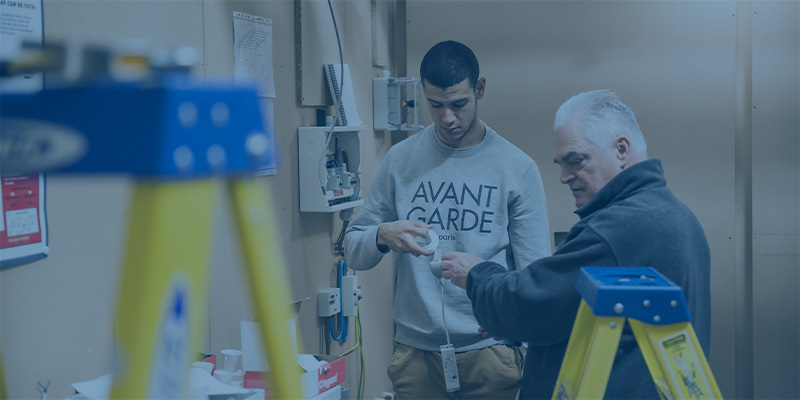
Logic4training's Safe Electrical Isolation training course is designed for experienced operatives who may need to isolate electrical services before commencing work.
It provides training on the requirements of the Electricity at Work Regulations (HSR25) and helps operatives to establish a Safe Working Procedure to prevent serious incidents and injuries.
Safe Electrical Isolation Training Course Details
It is imperative that electrical operatives apply the correct isolation procedure to prevent injury to themselves and others while work is taking place.
Applying the industry standard procedure has been shown to prevent injury and reduce the risk of incidents where work has been carried out on a live circuit.
Logic4training’s Safe Electrical Isolation course trains operatives on safe isolation procedure, regulations, tools and practices to ensure electrical work is carried out safely.
This course can be delivered on-site, subject to sufficient numbers and facilities. Please contact our customer service team on 0208 845 7222 to discuss your requirements further.
This course covers the requirements of the Electricity at Work Regulations (HSR25) and involves practical training and assessment using electrical test rigs.
Training covers the following areas:
- Single and multi-phase installations
- Understand and identify the current regulatory requirements and documents
- Understand the need for safe isolation of electrical circuits.
- Establish a safe working procedure for the isolation of electrical supplies
- Identify and use the correct tools for isolating electrical installations
- Apply the skills on realistic simulation
- The cost of the course includes training and certification fee.
A certificate of competence will be issued by LCL Awards upon successful completion of the course and assessment.
None, but learners should be working within the wider building services industry and have a knowledge of electrical installations.
FAQs
Safe electrical isolation is the process of ensuring that electrical equipment or circuits are completely de-energised before any maintenance or installation work begins. This prevents accidental contact with live parts, significantly reducing the risk of electric shock, burns, or fatal injuries. The Electricity at Work Regulations 1989 mandates safe isolation to protect workers and others from electrical hazards.
Anyone working on or near electrical systems should be trained in safe isolation procedures. This includes including electricians, maintenance engineers, and supervisors. The regulations require all personnel to be competent, meaning they must have the necessary training, skills, and knowledge to carry out their tasks safely.
The typical safe isolation process includes:
- Identifying all sources of electrical supply
- Switching off the supply at the appropriate point
- Locking off the isolation point using a unique key or combination lock
- Placing a caution notice at the point of isolation
- Proving the circuit is dead with an approved voltage indicator and proving unit
- Applying safety earths where necessary
- Issuing a permit to work, if required.
Essential equipment includes:
- Lock-off devices and unique keys
- Caution notices or tags
- Approved voltage indicators and proving units
- Personal protective equipment (PPE) such as insulated gloves and safety goggles
- Using the correct tools and equipment is vital to ensure that circuits are genuinely isolated and safe to work on.
It is best practice is to refresh training every three years or sooner if there are significant changes in regulations, equipment, or working practices. Continuous education is essential to keep up with evolving safety standards and new technologies.
Training reduces the risk of accidents, ensures compliance with legal requirements, and demonstrates a commitment to health and safety. This not only protects employees but also minimises downtime, legal liability, and reputational damage for employers.






